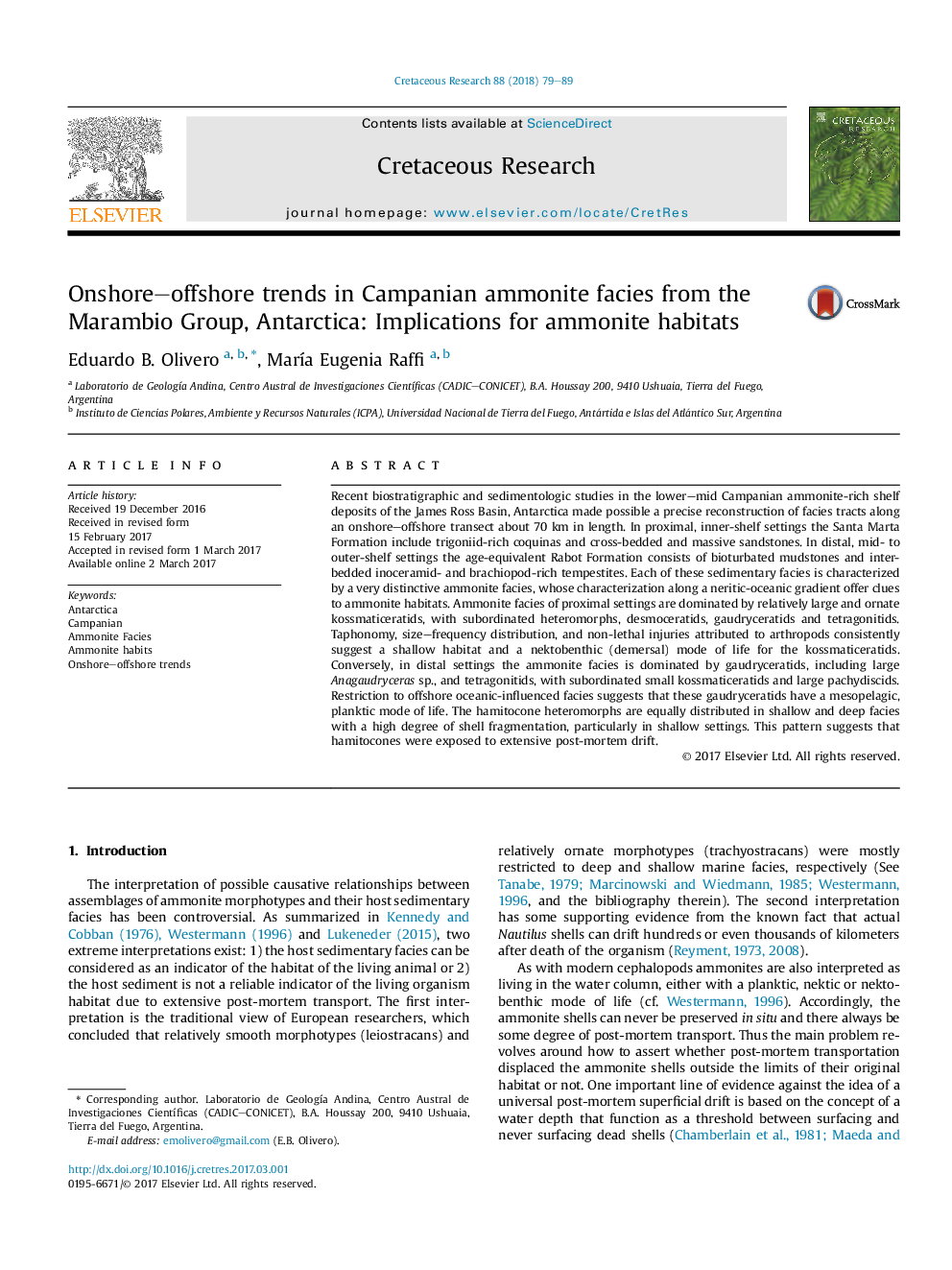| Article ID | Journal | Published Year | Pages | File Type |
|---|---|---|---|---|
| 8916257 | Cretaceous Research | 2018 | 11 Pages |
Abstract
Recent biostratigraphic and sedimentologic studies in the lower-mid Campanian ammonite-rich shelf deposits of the James Ross Basin, Antarctica made possible a precise reconstruction of facies tracts along an onshore-offshore transect about 70Â km in length. In proximal, inner-shelf settings the Santa Marta Formation include trigoniid-rich coquinas and cross-bedded and massive sandstones. In distal, mid- to outer-shelf settings the age-equivalent Rabot Formation consists of bioturbated mudstones and interbedded inoceramid- and brachiopod-rich tempestites. Each of these sedimentary facies is characterized by a very distinctive ammonite facies, whose characterization along a neritic-oceanic gradient offer clues to ammonite habitats. Ammonite facies of proximal settings are dominated by relatively large and ornate kossmaticeratids, with subordinated heteromorphs, desmoceratids, gaudryceratids and tetragonitids. Taphonomy, size-frequency distribution, and non-lethal injuries attributed to arthropods consistently suggest a shallow habitat and a nektobenthic (demersal) mode of life for the kossmaticeratids. Conversely, in distal settings the ammonite facies is dominated by gaudryceratids, including large Anagaudryceras sp., and tetragonitids, with subordinated small kossmaticeratids and large pachydiscids. Restriction to offshore oceanic-influenced facies suggests that these gaudryceratids have a mesopelagic, planktic mode of life. The hamitocone heteromorphs are equally distributed in shallow and deep facies with a high degree of shell fragmentation, particularly in shallow settings. This pattern suggests that hamitocones were exposed to extensive post-mortem drift.
Keywords
Related Topics
Physical Sciences and Engineering
Earth and Planetary Sciences
Palaeontology
Authors
Eduardo B. Olivero, MarÃa Eugenia Raffi,
